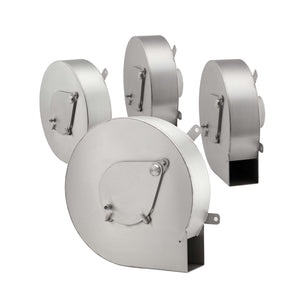In the realm of stormwater management, the effectiveness of attenuation tanks and crate systems is crucial in mitigating the impact of urban development on natural water cycles. However, to truly optimize these systems, it's essential to incorporate advanced technologies like vortex flow control devices. These ingenious mechanisms offer multifaceted advantages that enhance both performance and resilience in handling stormwater runoff.
-
Understanding Vortex Flow Control Devices: At the heart of stormwater management lies the vortex flow control device. Positioned strategically downstream of attenuation tanks, these devices operate by inducing a passive vortex within their structure. This vortex effect drastically reduces discharge rates compared to conventional orifice systems, thereby providing a controlled and regulated outflow of water.
-
Efficiency in Discharge Regulation: The beauty of vortex flow control devices lies in their ability to manage discharge rates effectively. Unlike traditional orifice systems, where discharge is solely dependent on the diameter of the orifice, vortex devices offer flexibility. With the same discharge achieved through a larger inlet, these devices mitigate the risk of blockages while maintaining optimal flow control.
-
Optimized Head-Discharge Relationship: One of the most intriguing aspects of vortex flow control is its unique Head-Discharge (Q-h) relationship. As the system transitions from open channel flow to fully established vortex flow, there's a notable efficiency in flow maintenance. This means that, on average, vortex devices maintain higher flows within the range of head considered, leading to reduced upstream storage requirements.
-
Installation Versatility: Vortex flow control devices offer versatility in installation options. While they can be attached to the headwall of SuDS basins, they are more commonly installed within chambers downstream of attenuation tank systems. This adaptability ensures seamless integration into existing stormwater management infrastructure.
-
Enhanced Stormwater Management Performance: By harnessing the power of vortex flow control devices, stormwater management systems can achieve unparalleled performance. These devices not only regulate discharge effectively but also minimize the risk of overflow during peak storm events. The result is a robust and resilient system capable of handling varying flow rates with ease.
-
Mitigating Environmental Impact: Beyond their operational benefits, vortex flow control devices contribute to mitigating the environmental impact of urban development. By controlling the release of stormwater runoff, these devices prevent erosion, minimize sediment transport, and safeguard the integrity of natural waterways.
-
Cost-Effective Solution: Investing in vortex flow control devices translates to long-term cost savings for municipalities and urban planners. By optimizing stormwater management efficiency, these devices reduce the need for costly infrastructure upgrades and maintenance, ultimately leading to greater economic resilience.
-
Future-Proofing Stormwater Infrastructure: As climate change continues to exacerbate the frequency and intensity of extreme weather events, the importance of resilient stormwater infrastructure cannot be overstated. Vortex flow control devices offer a proactive solution for future-proofing stormwater systems, ensuring they remain effective and adaptive in the face of evolving environmental challenges.
In conclusion, the integration of vortex flow control devices represents a significant advancement in stormwater management practices. From regulating discharge rates to optimizing flow efficiency and minimizing environmental impact, these devices offer a comprehensive solution for urban water management challenges. By embracing innovative technologies like vortex flow control, communities can build more sustainable and resilient stormwater infrastructure for generations to come.


No comments yet